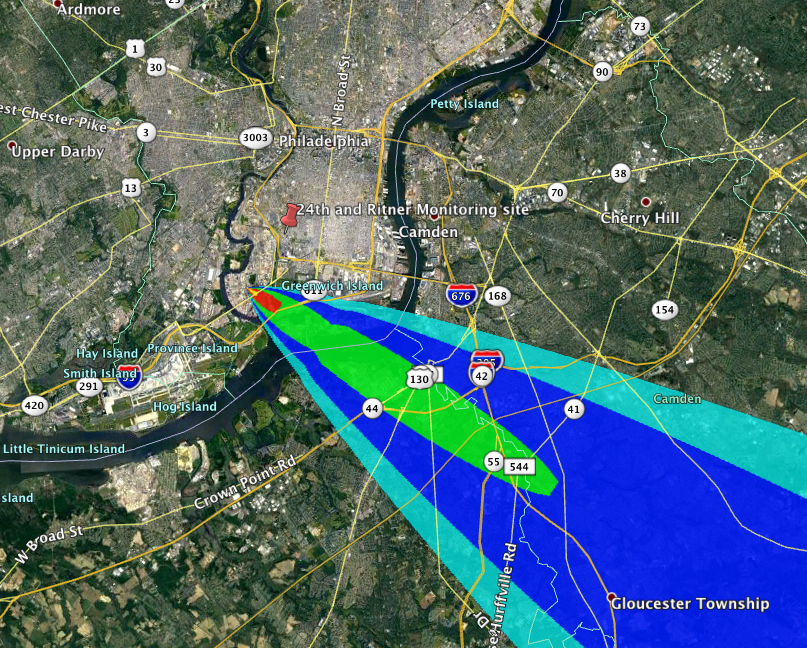The red thumbtack is the nearest location monitoring air quality. The plume is not traveling over it. Image courtesy of Professor Peter DeCarlo
by Alex Mulcahy
Should you be concerned about the aftermath of the explosion at the Philadelphia Energy Solutions oil refinery? It depends who you ask.
“If I lived there, I would not be in my home right now,” says Dr. Peter DeCarlo, a professor from Drexel’s College of Engineering, whose research interests include outdoor air quality and particulate matter. “I would be… waiting until the fire was completely extinguished. Then I would return home, and I would open all my windows and doors to… get more fresh air into the home to flush out anything that might have entered from the fire.”
Sounds pretty serious, yet the City seems much less alarmed.
“The Health Department has no findings that would point to any immediate danger in the surrounding community at this time, and the City is NOT recommending evacuation or shelter-in-place,” says Health Department spokesman James Garrow in the City’s press release.
Why the divergence in response? DeCarlo says it’s because of what they are and aren’t testing on site, and where their monitors are. The City has found that “ambient carbon monoxide, hydrocarbons (combustibles), or hydrogen sulfide” are not present in the air. However, particulate matter, which negatively affects the very young, the very old and those with existing breathing conditions, is key. Particulate matter, which is 1/100 the width of a human hair, is measured by the City by a monitor at 24th and Ritner.
Due to the direction of the wind, the plume is elsewhere.
“The color of the plume was black, which indicates a soot type of aerosols,” says DeCarlo. “This is similar to what you’d see coming out of a diesel truck or a diesel bus: that same kind of black unburned fuel that makes particulates in those situations is also making particulates in this fire.”
The only difference is that with explosions such as the one in Southwest Philadelphia, those particulates are in a very high concentration.
“There will likely be [an] increase in [hospital] admittance, or people going to the emergency room for respiratory issues who live downwind of this plume,” DeCarlo says.








